Please note that this article is written purely for plants that require humidity.
Contents
- A Plant's Relationship with Humidity
- Symptoms of Drying Air
- How Can I Increase It? (Includes Recommended Products/Items)
- What ukhouseplants Does to Help Humidity
Need the answer to a specific plant query? Book a 1-to-1 video call with Joe Bagley, the website's friendly author to overcome and address your niggling problem! Available on iMessage, WhatsApp, Facebook Messenger & more.
A Plant's Relationship with Humidity
Humidity is the invisible factor for a healthy specimen. Most indoor species originate from tropical locations, (like South America or South-East Asia) where the average humidity levels are above 70%.
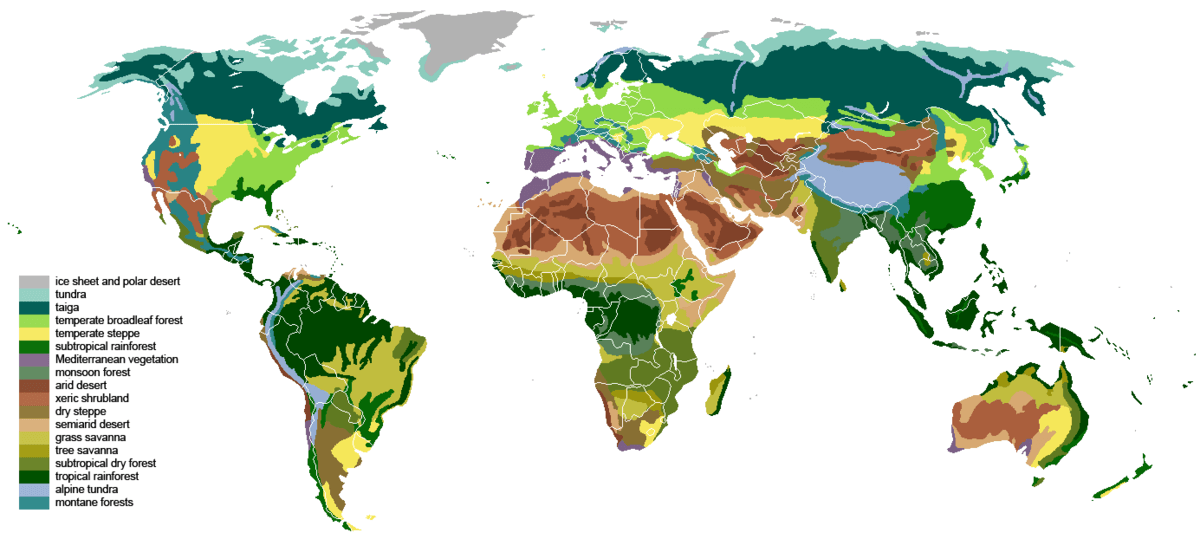 Copyright: Wikipedia
Copyright: Wikipedia
Our homes, on the other hand, will flutter around the 30 - 50% mark, depending on the season. Although this won't necessarily kill your plant, its overall health and quality of its leaves will be significantly hindered. Cuttings also require a high and reliable level of humidity, as there'll be an absence of roots, meaning that it'll solely rely on the atmosphere for hydration.
So, what's the actual relationship between humidity and the plants? To save waffle, ukhouseplants have narrowed it down to four bullet points.
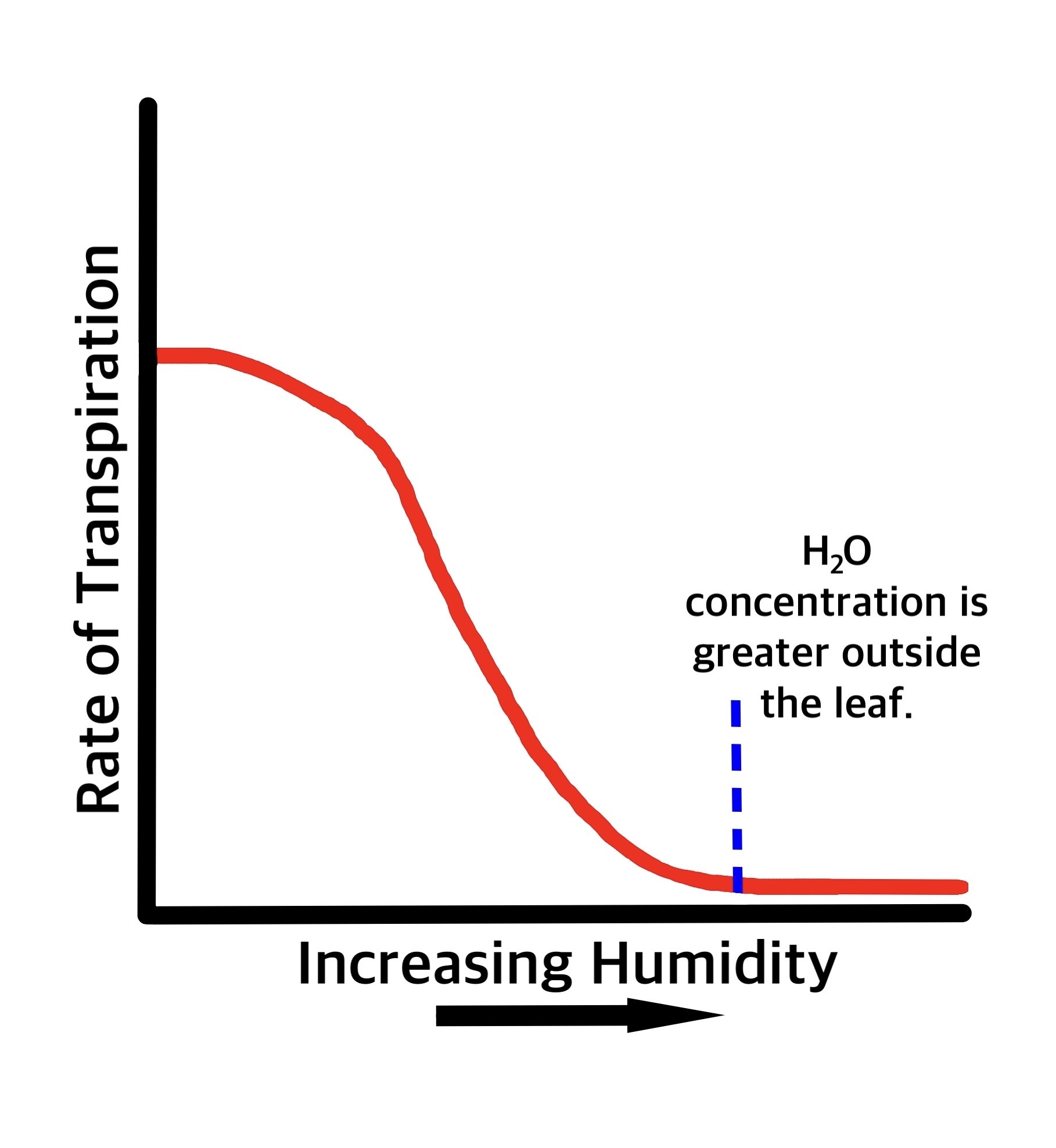 A depiction on how a decreased level of humidity can effect the rate of transpiration. Copyright: ukhouseplants.com
A depiction on how a decreased level of humidity can effect the rate of transpiration. Copyright: ukhouseplants.com
- Transpiration (water loss through the leaf's stomata) will be at its highest in dry air to compensate for the lack of water molecules in the atmosphere.
- The plant will begin to run the risk of dehydration (especially when under-watered), adopting permanent damage in the likes of browning leaf-tips, etc.
- New growth will be to a minimum, with its overall health gradually declining. With the stomata closed, rates of photosynthesis will significantly drop along with the higher risk of suffering from pests or diseases.
- An over humid environment could aggravate the symptoms of over-watering, as the plant won't be able to lose water quickly. A reduced level of air circulation accompanied by high humidity could entice diseases such as Botrytis & Powdery Mildew to develop.
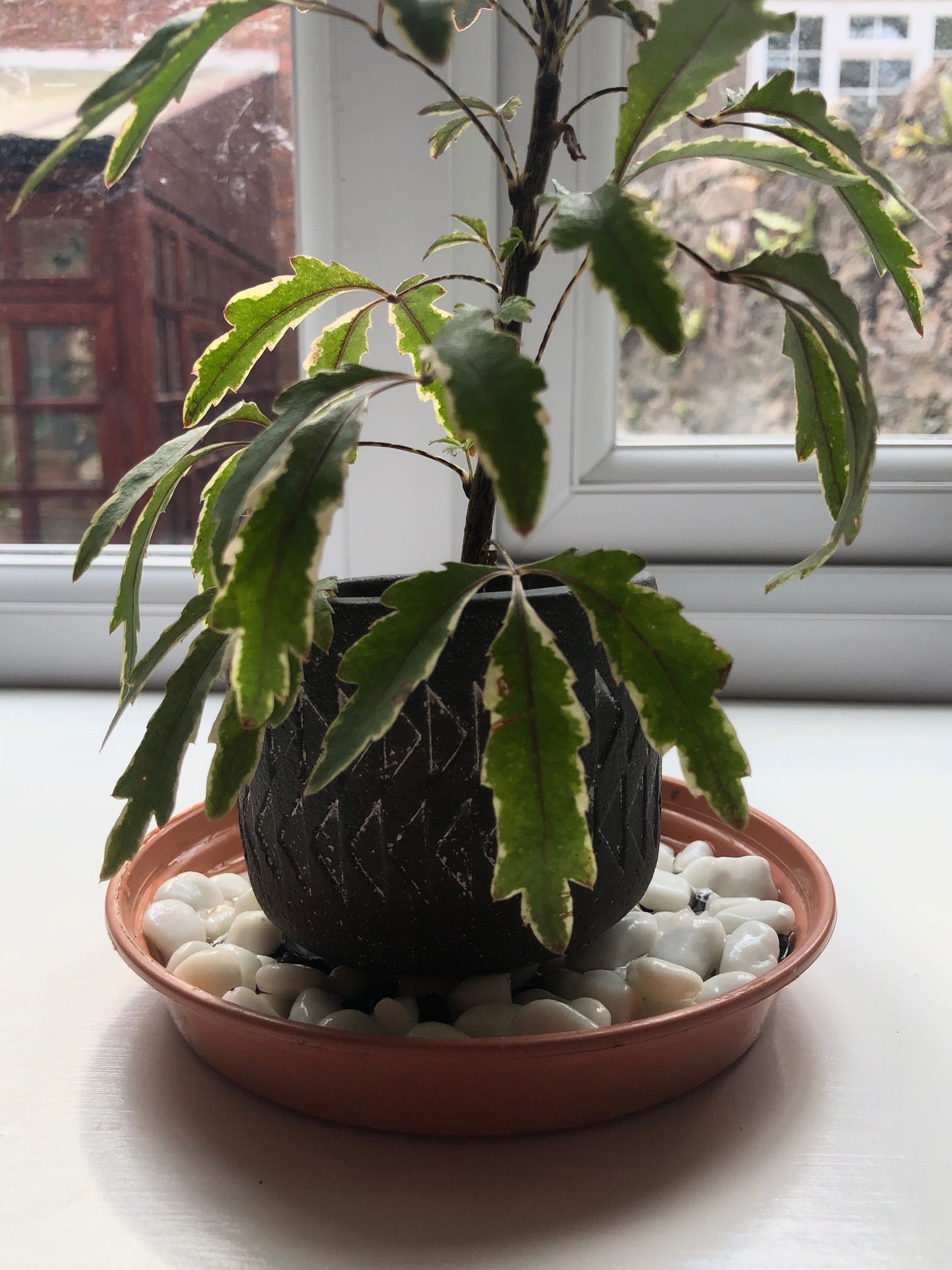 Introducing a pebble tray with water & stones is the cheapest and best way to increase the local humidity levels.
Introducing a pebble tray with water & stones is the cheapest and best way to increase the local humidity levels.
Symptoms of Drying Air
The effects of too little air moisture can, directly and indirectly, affect a plant. Have a look at the different examples of each subheading to find out more.
Direct
- It'll aid the process of dehydration due to the increased rates of transpiration. The speed and quality of new growth will begin to decline, weakening the plant's overall health. The leaf-tips and edges will start to brown and dry-out, thus becoming the first visual tell-tale sign of the issue. This is a permanent fixture to the plant's appearance and cannot revert to its former green glory once browned. Once the humidity improves, its new growth will be wholesome again.
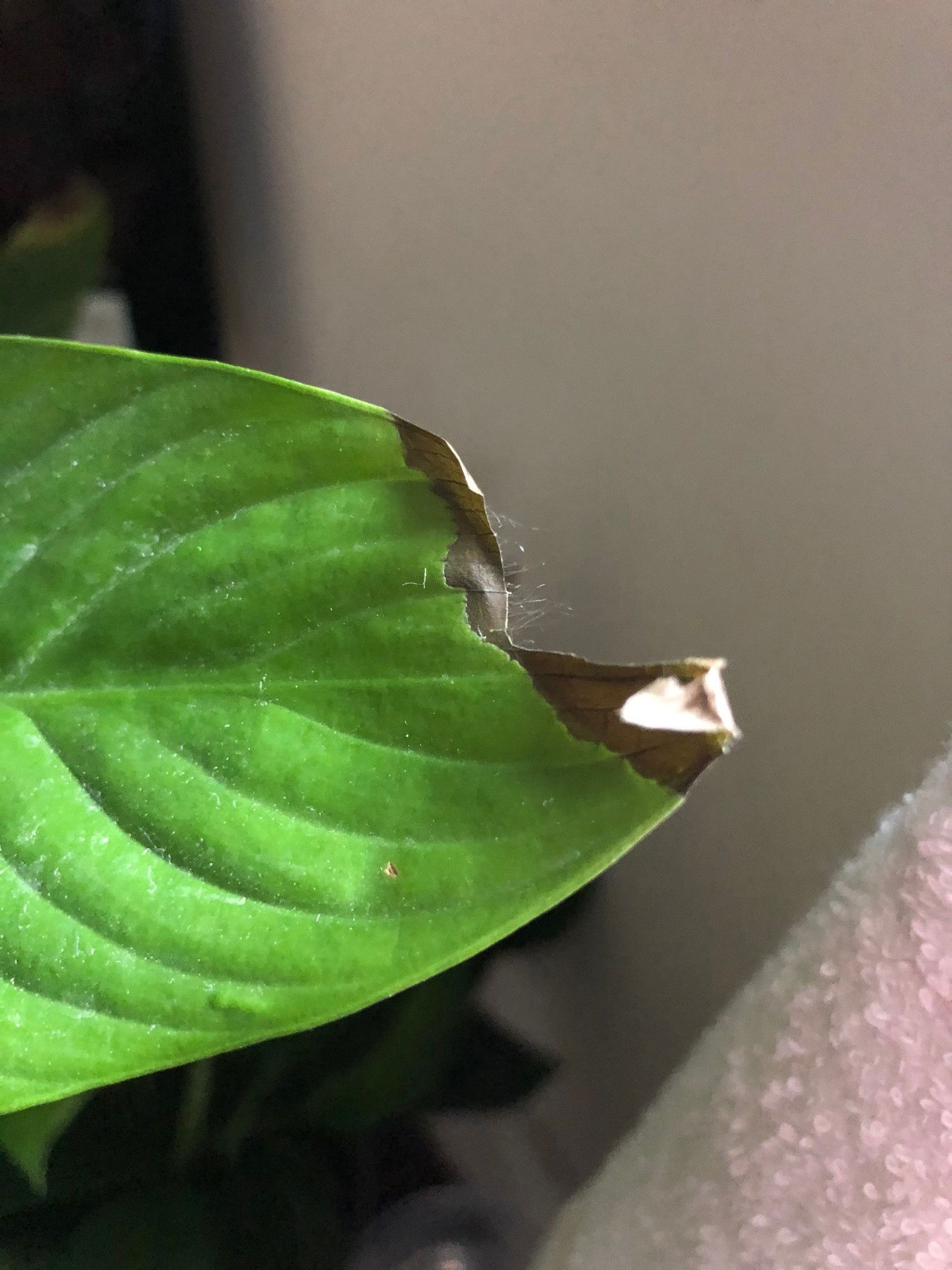 Browning leaf-tips is a common symptom of dry air.
Browning leaf-tips is a common symptom of dry air.
Indirect
Unfavored locations will significantly reduce the chance of blooms, as the plant won't be able to respond to its environment sufficiently. A great example of this is an Orchid. Providing a moist environment during the production of its stalk will result in a longer show of flowers and a possible development of a 'Keiki'. This odd-sounding phenomenon is when the stalk is exposed to high levels of atmospheric saturation, causing a mutation where an offset will form at a non-budding node.
A Change in Location & Environmental Shock
- Relocating a plant into a new location may put stress on its overall health, especially when its previous environment had better-growing conditions. One of the biggest causes of environmental shock is a change of humidity levels. Some specimens that are sensitive to this, for example, a Croton or Ficus ginseng, may drop its lower leaves in protest for the relocation.
How Can I Increase It?
There are several methods to improve the humidity in your home. Not only will it benefit the plants, but it'll also improve YOUR health, too. In this section we're going to discuss the top five methods to increase the overall saturation in a house.
1. An Electric Humidifier
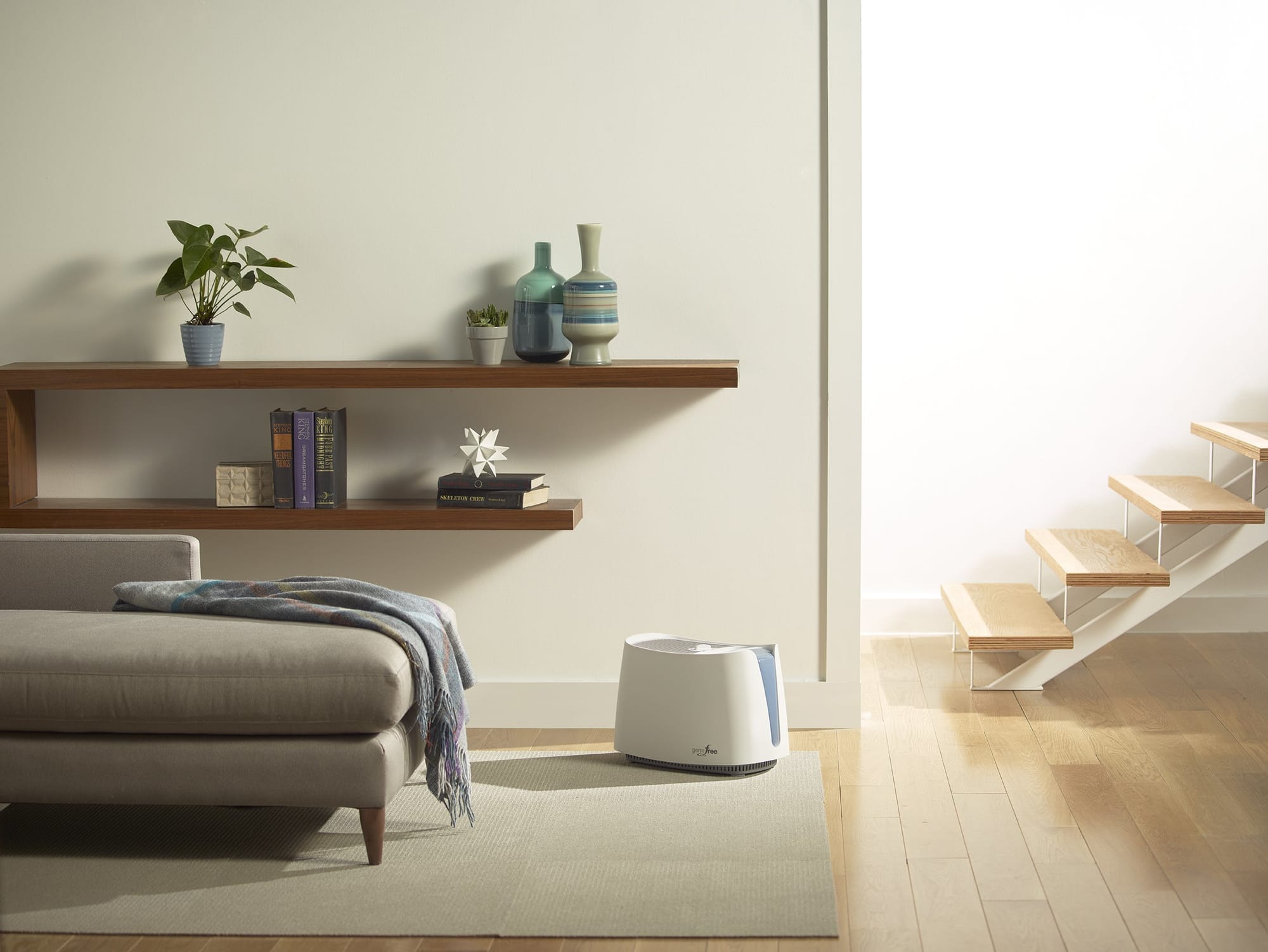 ukhouseplants would recommend the Honeywell HCM350W
ukhouseplants would recommend the Honeywell HCM350W
Artificial humidifiers can come in all shapes and sizes, with some being better than others. Have a look all of the options available and consider the benefits and drawbacks with each product. There'll be some that are too loud, and others that'll only moisturise a portion of the room. We'd recommend buying the 'Honeywell HCM350W' as it serves the best value for money and overall performance. The prices start around £70 (US $90) - which isn't too costly as some products can surpass the £200 mark! The Honeywell has two main functionalities; increasing the ambient humidity and removing toxins and germs from the atmosphere. Click on the link above to read more around our recommended product, or view other similar ones here.
2. Humidity / Pebble Tray
If purchasing an artificial humidifier doesn't rock your boat, we'd recommend creating a pebble tray. The principles are simple - fill a saucer or container with any sized stones and fill with water. Place the plant directly onto the bed of gravel, ensuring that the pot's bottom ISN'T in contact with the reservoir. Hydrate the plant and fill the container accordingly - notice how a simple increase of humidity will reduce the frequency of irrigations considerably. This method can be used all year round but is most effective while the heaters are operating in the winter. Plants such as Orchid, Bonsai's & Flowering Specimens will respond well to the change, with longer-lasting flowers and a better quality of growth being the usual responses.
3. Group Plants Together
This is the second most effective way in which to combat the drying air in the home. As plants will produce their own moisture via transpiration, keeping them in close together will increase the local humidity levels. Creating an 'Indoor Garden' or display is another fantastic method to maintains a microcosm of humidity - have a look at the image below for inspiration.
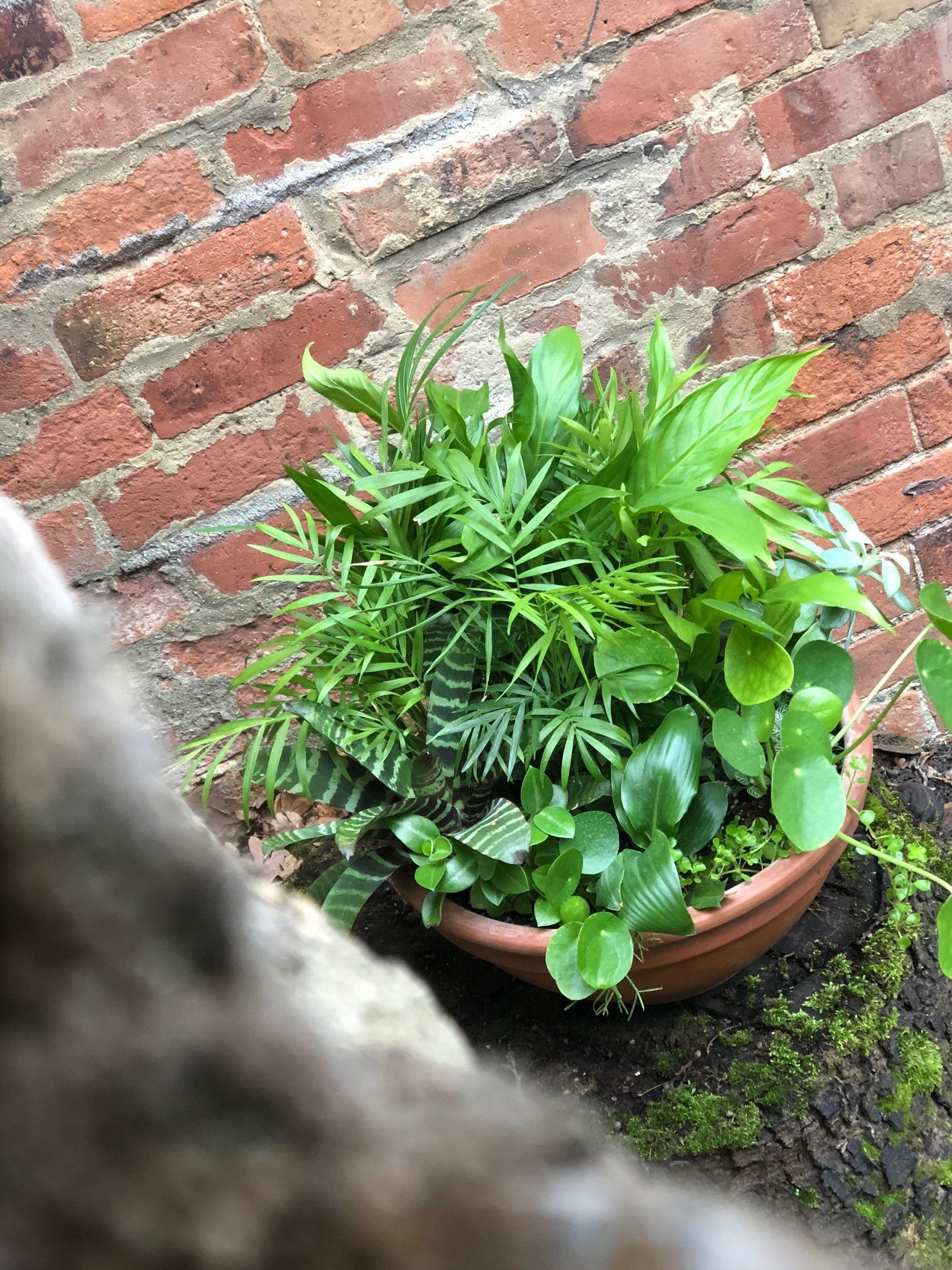 Placing houseplants within a close proximity will increase the surrounding humidity by half...
Placing houseplants within a close proximity will increase the surrounding humidity by half...
4. Misting the Foliage
This step comes with positives and negatives. Although it's highly beneficial to saturate the leaves now and again, you can easily fall in the trap of over-misting. Diseases such as Powdery Mildew or Botrytis Petal Blight will thrive in moist, poorly air circulated environments that can wreak havoc on the plant's health. Not only that but spraying the foliage will present an unstable environment, resulting in leaf or flower loss depending on the specimen's sensitivity.
Foliage saturation (misting or washing) at monthly intervals will remove dust particles and optimise its light-capturing efficiency. So don't get us wrong, misting its leaves will definitely improve the conditions, but never solely rely on this to combat dry air.
5. Ceramic Bowls
Keeping a bowl of water near to the pot is a building block to a reliable environment. Similarly to the Humidity Tray, a reservoir of water will slowly evaporate into the atmosphere, thus improving the local humidity at a steady pace.
You can even place bowls on the radiators itself. When it fires into action, the reservoir's water will warm-up and be released for your plants to enjoy. Although this won't wholly resolve the issue, it'll alleviate the intensity of the radiators and offer a slightly more saturated environment.
What We Do & Recommend
If you're interested in increasing humidity in your home without the use of an artificial humidifier, follow these five tips.
- If grown individually, introduce a humidity tray to improve the overall conditions and prolonging of flowers.
- Group plants together within 40cm of each-other & introduce a bowl of water around the pots' base.
- Keep the plants at least three metres away from an operating heater. (Except for radiator-tolerate plants like cacti).
- Wash the foliage with an outdoor hose at monthly intervals to optimise light-capturing efficiency and remove potential pests.
- Never cut-off the leaves' browning tips or edges due to the chance of attracting airborne diseases - embrace the war-wounds and learn from your previous mistakes!
Book a 1-to-1 Consultation with THE HOUSEPLANT DOCTOR™
Need realtime advice for your houseplants? Book a video or message consultation with expert Joe Bagley, THE HOUSEPLANT DOCTOR™ (author or ukhouseplants.com). Choose between a ten or thirty-minute session & a platform of your choice (WhatsApp, FaceTime, Facebook Messenger or Zoom). Ask unlimited questions in one session, including queries on your dying/challenging plants, pests eradication, terrariums, repotting advice & everything in between! Available worldwide.